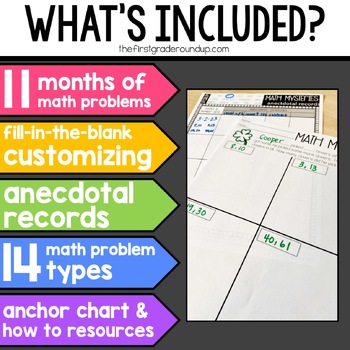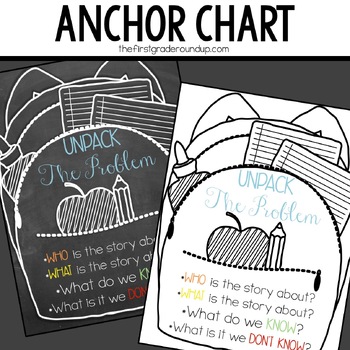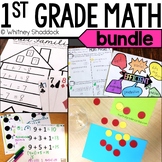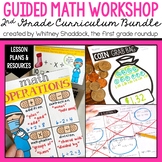Math Word Problems Addition and Subtraction Templates Aligned With CGI Math K-4
- Zip
Products in this Bundle (13)
showing 1-5 of 13 products
Also included in
- It's hard to find a 1st grade math curriculum that is rigorous AND engaging! Look no further! This first grade guided math curriculum has 1st grade math lesson plans already written for you plus all the materials needed to implement guided math workshop right away.WHY GUIDED MATH WORKSHOP?Many teachPrice $159.00Original Price $221.00Save $62.00
- Do you feel lost planning second grade math each week? Do you feel like you have some good pieces or parts of your 2nd grade math curriculum, but you can't seem to fit them all in or make them all work together? Guided math workshop is for you! WHY GUIDED MATH WORKSHOP?Many teachers and districtsPrice $149.00Original Price $212.50Save $63.50
Description
CGI math story problems are a crucial part of elementary math but can be tiring to write every day for your kids. These May templates for Spring math word problems have the addition and subtraction math story already written for you. Just customize the template with a student's name and fill in whatever number sets your kids need.
Why use templates for CGI Math Word Problems?
Not only do they push critical thinking skills, but solving math story problems is a real life skill! These templates for Spring math word problems allow you to differentiate the number sets your kids are solving while all working on the same math story problem. That means, it's possible for all kids to be discussing the same math word problems while solving it using number sets appropriate for multiple grades and skill levels.
Math word problems are based on the principles of Cognitively Guided math. I have found that using Cognitively Guided Math in my classroom through these daily word problems has GREATLY increased the math performance in my classroom. AND it is Common Core Aligned--big time! By doing a complete lesson outlined in this packet, you can cover almost all of your Operations and Algebraic Thinking Standards as well as your Number and Operations in Base Ten Standards for grades K-4.
INCLUDED IN EACH MONTH OF MATH STORY PROBLEMS
- Detailed daily plan and routine for teaching math word problems in your classroom
- Resource page of the 14 math story problem types included with explanations and level of difficulty
- Explanation of how to use the word problem pages and customize them to fit your classroom
- Anchor Chart: Unpacking the Problem to help students comprehend word problems better...heavy ink and light ink version
- 31 customizable math word problems themed for each month. And you can easily do the same problem twice with different numbers...enough to last you the entire month!
TEACHERS LIKE YOU SAID…
⭐️⭐️⭐️⭐️⭐️ "I love the ability to customize the word problem to meet the needs of my students." ~Yolanda
⭐️⭐️⭐️⭐️⭐️ "I continue to love how my students are challenged by upping the numbers once they understand how the problem works. This resource makes for engaging conversations and I've begun letting students choose the last set of numbers. It's fun to see what they pick!" ~Julie
⭐️⭐️⭐️⭐️⭐️ "Love the simplicity and ease of use of this product! I have every month already printed and ready to use in a binder. " ~Reyne
⭐️ BUNDLE & SAVE FOR A DISCOUNT ⭐️
Purchase the Year of Customizable Math Word Problems to get math story problem templates for the entire year!
You may also like…
Having difficulty with a file?
Visit the FAQs section, submit a help ticket, or ask a question on the Q&A tab before leaving feedback.
___________________________________
Copyright © The First Grade Roundup by Whitney Shaddock.
Permission to copy for single classroom use only.
Please purchase additional licenses if you intend to share this product.
LET'S CONNECT







